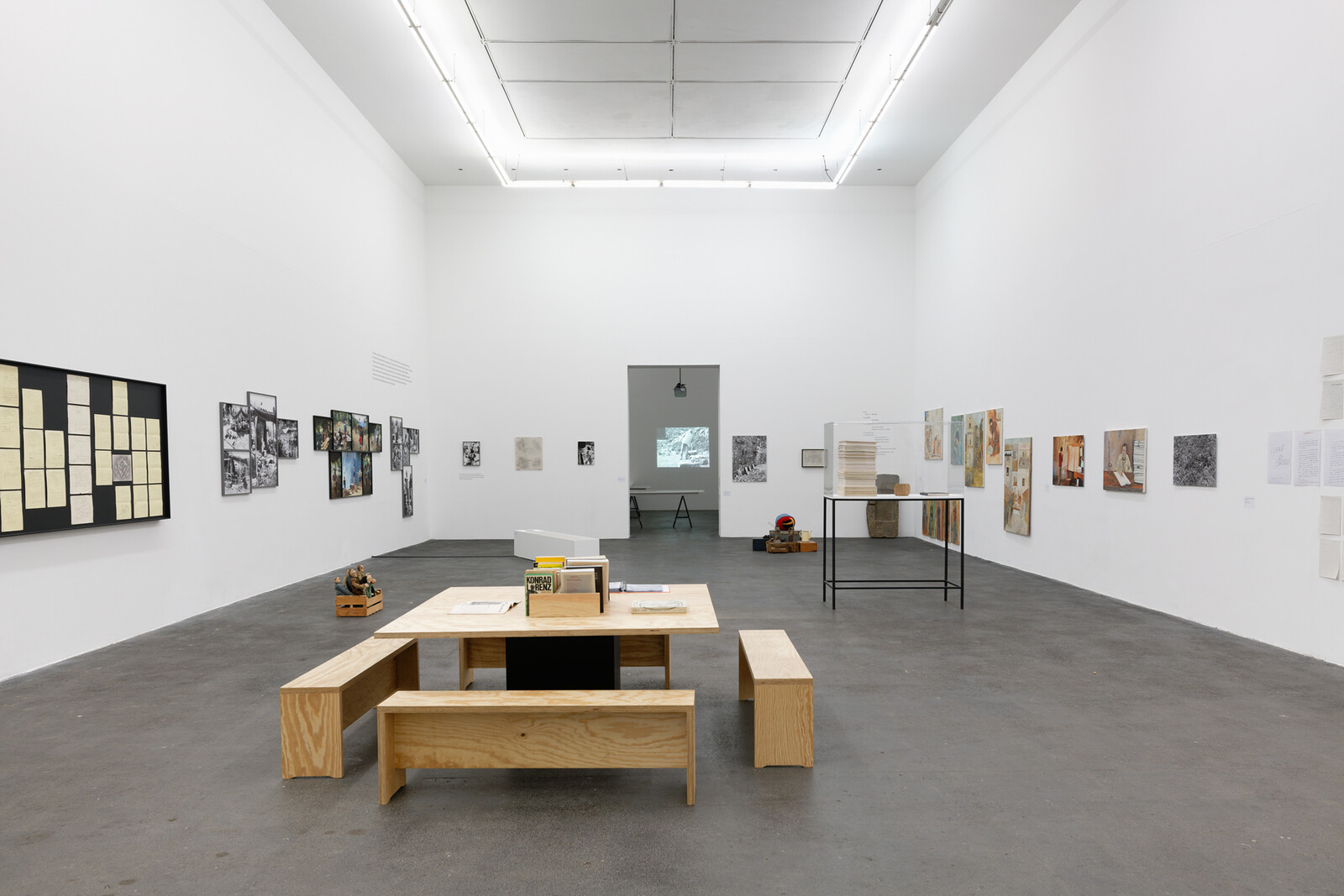Florian Fouché: Assisted Manifesto
February 11–April 29, 2023
26 quai Aspirant Herber
34200 Sète
France
Hours: Wednesday–Monday 12:30–7pm,
Saturday–Sunday 2–7pm
T +33 4 67 74 94 37
crac@laregion.fr
Fernand Deligny: Legends of the Raft
The exhibition was created in partnership with La Virreina Centre de la Imatge in Barcelona, where it will be presented from November 2023 to March 2024.
Fernand Deligny was born in 1913 in Bergues in the north of France. He worked as a teacher for maladjusted children in 1938 in Paris and Nogent-sur-Marne before becoming an educator at the medico-pedagogical institute of the Armentières Asylum during the Second World War.
In 1943, he founded the first delinquency prevention shelters in Lille, where he later became director of the Centre d’observation et de triage (C.O.T), which he converted into an open centre operated by labourers and Resistance fighters.
In Paris in 1947, with members of the Communist Party, he founded La Grande Cordée, an association providing non-institutional care for delinquent and psychotic adolescents. It operated for some fifteen years.
In 1967—the year he met Janmari, a ten-year-old nonverbal autistic boy—he set up an informal care network for autistic children, in Monoblet in the Cévennes. The network lasted until the 1990s. “My plan was to write,” said Deligny: for him, writing was a constant, existential activity, a permanent laboratory of his practice as an educator. Between the aphorisms of Graine de crapule, a virulent lampoon against re-education practices, and L’Enfant de citadelle, an unfinished autobiography written at the end of his life, he published no less than twenty books. He died in Monoblet in 1996. Fernand Deligny’s life and work are inseparable from his “attempts”* to allow the children and adolescents placed under his care—who were delinquent, psychotic, then autistic—to live according to their own “ways of being”, rather than according to the social rules of education. He conducted these experiments first within institutions, then “outside”, where it became possible to independently invent a specific living environment and a common territory. This outside perspective was the first condition of Deligny’s attempts; the second was experimentation.
In 1967, accompanied by those he called “close presences” (non-professional educators: first and foremost Jacques Lin, Gisèle and Any Durand, Guy and Marie-Rose Aubert), he founded an informal care network for autistic children in the Cévennes. To designate this fragmented, makeshift, precarious territory, he used the word “raft”. The raft was defined by places (“living areas”), an organisation, a language, and practices that we will be careful not to call artistic, since for Deligny, art remained something elusive on the horizon.
This exhibition is an opportunity to present the network’s cartography on a large scale: transcriptions by “close presences”, on ordinary and tracing paper, of the autistic children’s “wander lines”, their detours, their gestures; and to show the constant use that was made of film and video in the living areas. By mobilising Deligny’s texts and the network’s images (photography, film, painting), it also enables the legends of the raft to be presented for the first time, and to be reconfigured for a possible reimagining of the epic of the Cévennes.
Exhibition conceived by Sandra Alvarez de Toledo, Anaïs Masson and Martín Molina Gola, with the help of Gisèle Durand-Ruiz, Jacques Lin and Marina Vidal-Naquet.
Florian Fouché: Manifeste assisté
“We are all assisted and assistants at the same time. Everyone, whether powerful or powerless.
‘Close actions‘ were first carried out during visits with my father, Philippe Fouché, at the medical institutions in which he has been living since 2015 (hospitals, a rehabilitation facility, a nursing home…) following a stroke that paralysed him on one side. Through gestures, displacements and manipulations of objects found on site, I intensified my relationship with spaces arranged for care, which had become places of a family life. I acted in Philippe’s vicinity, rather than with him, during waiting times when health professionals were caring for him.
‘Close actions’ is derived from ‘close presences,’ the expression by which Fernand Deligny designated the non-professionals who, in the middle of the Cévennes from 1967 to the 1990s, watched over autistic children entrusted to them, inventing a way of life with them outside of any institutional framework, on experimental camps dubbed “living areas”.
Since 2020, assistant-assisted actors and actresses have been ‘close acting.’ Body collisions and distancings, objects-sculptures-accessories-cameras, : close actions have no script and recount nothing; they are the result of what I call ‘empathetic aberrations,’ which arise in failures to identify with other objects or people. Trying to put yourself in the place of a nurse on strike, a baby on the grass, someone who does not walk, something that rolls, a turning fork, a stripe on fabric… Not succeeding, and plastically speculating on the diversity of modes of existence.
After the 10-rue-Saint-Luc (the studio of L’Arachnéen), Bétonsalon, MoMA’s Virtual Cinema, the Centre Pompidou Metz, and Parliament gallery, the Crac Occitanie is presenting the sequel to Manifeste Janmari, entitled Manifeste assisté. The exhibition is a new scene of ‘aberrant memory’ (Deligny), structured around a selection of new and old close actions.”
—Florian Fouché
What is Crac Occitanie?
Located in Sète, on the bank of Canal Royal in the heart of the city, the Crac Occitanie overlooks the port and the Mediterranean Sea. Its architecture’s exceptional volumes reflect the industrial nature of the building, which was originally a refrigerated warehouse used for the conservation of fish. In 1997, architect Lorenzo Piqueras renovated the original building, giving it the current configuration and transforming it into an exceptional exhibition site, offering 1,200 square meters of gallery space distributed over two floors.
The Crac is dedicated to artistic creation. It offers a programme of temporary exhibitions, publishes exhibition catalogues and artist books, and develops a dynamic cultural and educational programme for all audiences, through guided tours, workshops, lectures, concerts, performances and more.
The Centre Régional d’Art Contemporain is managed by the Région Occitanie / Pyrénées-Méditerranée. It receives support from the Ministry of Culture and aid from the Occitanie region’s prefecture and DRAC.








